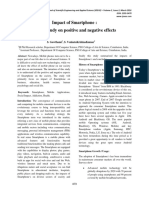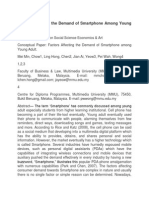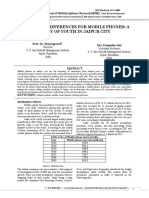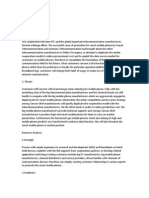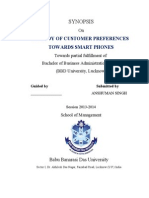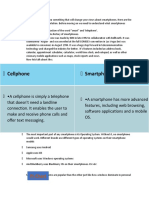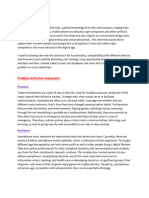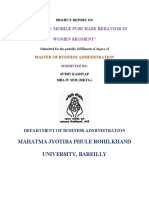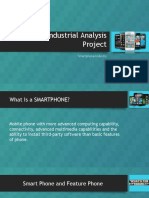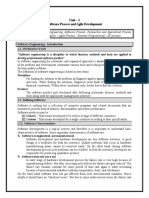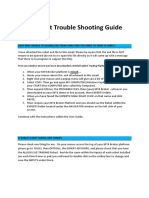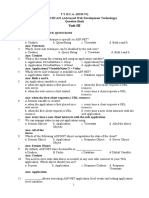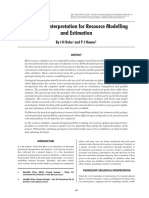0% found this document useful (0 votes)
10 views2 pagesResearch Reportrws
This research report analyzes the comparative usage and preferences of smartphone and non-smartphone users, focusing on factors such as age, gender, education level, and user satisfaction. It employs both primary data from surveys and secondary data from internet sources, and includes a SWOT analysis highlighting strengths, weaknesses, opportunities, and threats in the smartphone market. The conclusion emphasizes the rapidly evolving nature of the smartphone market, characterized by intense competition and significant inter-market effects.
Uploaded by
Jhonzel DeciarCopyright
© © All Rights Reserved
We take content rights seriously. If you suspect this is your content, claim it here.
Available Formats
Download as DOC, PDF, TXT or read online on Scribd
0% found this document useful (0 votes)
10 views2 pagesResearch Reportrws
This research report analyzes the comparative usage and preferences of smartphone and non-smartphone users, focusing on factors such as age, gender, education level, and user satisfaction. It employs both primary data from surveys and secondary data from internet sources, and includes a SWOT analysis highlighting strengths, weaknesses, opportunities, and threats in the smartphone market. The conclusion emphasizes the rapidly evolving nature of the smartphone market, characterized by intense competition and significant inter-market effects.
Uploaded by
Jhonzel DeciarCopyright
© © All Rights Reserved
We take content rights seriously. If you suspect this is your content, claim it here.
Available Formats
Download as DOC, PDF, TXT or read online on Scribd
/ 2
